Reading through the NHL Collective Bargaining Agreement can be confusing. Often times it is hard to cut through the legal jargon and get to the bottom of what a rule really means.
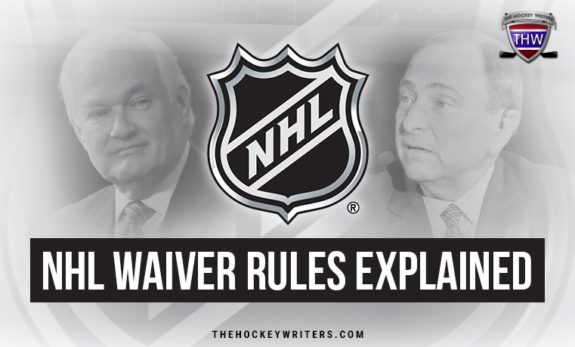
One of the more confusing rules deals with NHL Waiver Rules. This article will break down the various types of waivers and offer up examples to help make it easier to understand.
The Original Concept of Waivers
NHL waivers had their origins back in the 1950s. Between the mid-1950s and 1975, the NHL had an Intra-League Draft. It was similar to the Expansion Draft when the Vegas Golden Knights entered the league in 2017. With the Intra-League Draft, teams were allowed to protect some of their players, while others could be drafted by weaker teams.
The Robin Hood-esque concept was thought to promote competitive balance in the NHL. The Intra-League Draft later turned into the “waiver-draft,” which existed until the lockout in 2004-05.
What are Waivers?
Waivers are a tool through which a team can send a player to the minors. A player who has to go through waivers is offered up to all other teams before he can be placed in the minors. If claimed by a team, that team must assume the player’s existing contract and it is taken off the player’s former team’s books.
A waiver claim costs a team virtually nothing. They don’t give up any of their own players or draft picks as they would if they were acquiring another team’s player in a trade.
Types of Waivers
Before getting into the nitty-gritty, let’s define the different three types of waivers: Regular, Re-entry, and Unconditional.
Regular Waivers
Regular waivers are the waivers an NHL team exercises when they want to send a player to the minor leagues. When a player is reassigned from the NHL to the AHL, he must pass through waivers (unless exempt). Waivers allow any of the other teams to claim the rights of the player.
Unconditional Waivers
When a team wants to terminate a player’s contract, they place the player on unconditional waivers. This is usually done to buy out a player’s contract. It’s similar to Regular Waivers, but no team has ever placed a claim on this type of waived player. It can only happen in June during a two-week window.
Re-Entry Waivers
Re-entry waivers were a product of the CBA prior to 2012. They are no longer in effect in the current CBA. They were written to prevent teams from stashing ringers in the AHL.
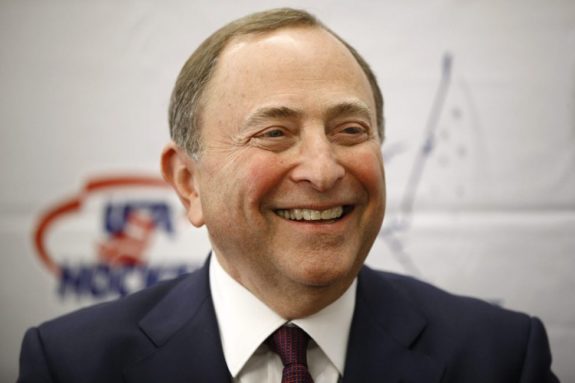
The “Wade Redden Rule” (paragraph 50.5(d)(i)(B)(6)), states that for purposes of computing a team’s average salary for cap compliance, salaries for players on a one-way contract count to the extent that they are higher than the minimum NHL salary plus $375,000.
When is the Waiver period?
Waivers go into effect 12 days before the start of the regular season. They last until the day after a team’s playing season.
Example: The Boston Bruins are knocked out of the playoffs on May 2. The waiver period for the Bruins would then end on May 3.
Who Has to Go Through Waivers?
A player’s waiver status is based on a combination of the age at which he signed his first NHL contract, the number of games played after the contract was signed, and years in the league. Also, waiver eligibility is different for skaters and goalies.
For the most part, the earlier a player signs his first contract, the longer he is exempt from waivers.
Determining a Player’s Age
According to the CBA:
- If a player turns 18 between Jan. 1 and Sept. 15 in the entry-draft calendar year preceding the first season of the player’s entry-level contract, they are considered 18.
- If a player turns 19 before Dec. 31 in the entry-draft calendar year preceding the first season of the player’s entry-level contract, they are considered 19.
- If a player turns 20 before Dec. 31 in the entry-draft calendar year preceding the first season of the player’s entry-level contract, they are considered 20, and so on.
The following table from the current CBA indicates when a player is no longer exempt from waivers. For example, a skater who signs his entry-level contract at 18 will become exempt after playing 160 NHL games, or after five seasons (whichever comes first).
If an 18- or 19-year-old plays 11 NHL games in an NHL season, the waiver exemption is reduced to four years for goalies and four years for skaters.
For 20-year-old players (either skaters or goalies), playing in one professional game will count as the first year of their exemption. For 25-year-old players (either skaters or goalies) playing one professional game will only be exempt for the remainder of that season.
Players who play in another league at the start of the NHL season have to go through waivers when signed by an NHL team.
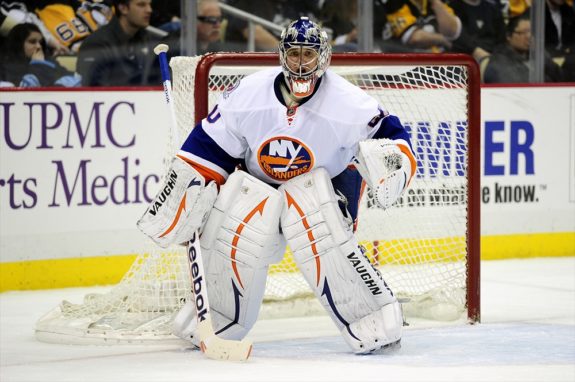
For example, Russian goaltender Evgeni Nabokov played the 2010-11 season in the KHL. When he left Russia to return to the NHL, he was hoping to join the Detroit Red Wings. Instead, Nabokov was subject to waivers and was ultimately claimed by the New York Islanders.
If Multiple Teams Submit Claims Who Gets the Player?
If a player is placed on waivers prior to Nov. 1, the waiver order is determined by the reverse standings order from the previous season. This means the team in last place gets the first chance to place a claim on a player.
If the player is placed on waivers after Nov. 1, then the claim order goes by the current season’s standings.
Can You Trade a Player Claimed Off Waivers?
Players who are claimed off waivers must be offered to the other teams that placed an original claim before that player can be traded.
For example, if a player is placed on waivers and three teams place a claim on him. The team lowest in the standings gets first dibs. If they then decide to trade the player, he would first have to be passed on by the other two teams. If a team places a claim, he’d be theirs. If not, he can be traded.
How Long is a Player on Waivers?
Once a player is placed on waivers, other teams have 24 hours to place a claim. If no team places a claim on the player, he can be officially assigned to the team’s minor league affiliate in the AHL.
That said, a team doesn’t have to place a player in the minors. In 2011, the Philadelphia Flyers placed Nikolay Zherdev on waivers and no team made a claim. The Flyers then had 30 days to assign Zherdev to the Adirondack Phantoms. The Flyers chose not to do this, and after the 30 days expired, Zherdev had to stay on the team.
Do One-Way and Two-Way Contracts Affect Waivers?
Simply put, no, they do not. This is a common misconception. One-way and two-way contracts have nothing to do with waivers. They are solely for salary purposes between the AHL and NHL.
The confusion is understandable. Most players with two-way contracts are waiver exempt because of the reasons above. Most players on one-way contracts are not waiver exempt. When in doubt of a player’s eligibility, just keep in mind that the chart above is the only thing that determines a player’s waiver status.
The Waivers Process: Zach Bogosian
For purposes of better understanding the waiver process, consider Exhibit A: Former Buffalo Sabres defenseman Zach Bogosian during the 2019-20 season.
Timeline of events:
Feb. 14, 2020: While under contract, the Buffalo Sabres placed Bogosian on waivers.
Feb. 15, 2020: After 24 hours, no team placed a claim for Bogosian, so he was eligible to be assigned to the team’s AHL affiliate, the Rochester Americans. The Sabres assigned him there.
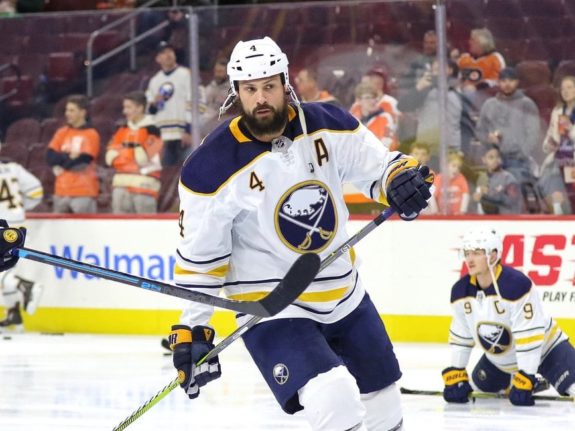
Feb. 17, 2020: The Sabres suspended Bogosian without pay for failure to report to the Americans. This took Bogosian off the Sabres’ books in regards to the team’s cap. Though he has little value, Sabres could have still tried to negotiate a trade. This would have likely meant that the Sabres would be retaining all or part of his salary.
Feb. 21, 2020: The Sabres placed Bogosian on unconditional waivers with the intention of terminating his contract. This voided the remaining money on his current contract and made Bogosian an unrestricted free agent and able to sign with another team.
Feb. 23, 2020: Bogosian signed a one-year $1.3 million contract with the Tampa Bay Lightning.
Waivers Are Beneficial and Necessary
Waiver rules can be difficult to understand, but at their core, they’re beneficial for the league and all of its teams. It’s a helpful way of ensuring no team can hoard talented players and send them to the AHL when they aren’t needed. They bring balance to the league.

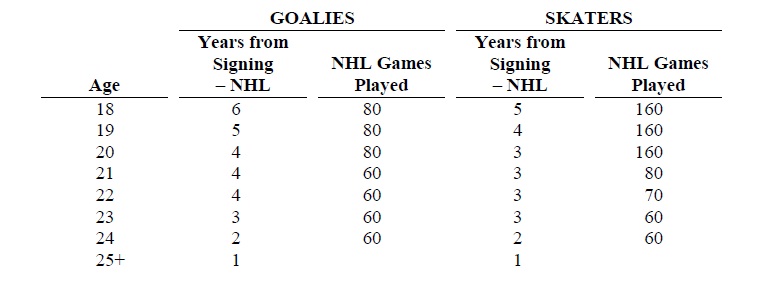
if i was a team that high priced players with more than 5 nhl years but was not able to arrange suitable trades for them can i waive them and send them to the minors and if i may, do i have to include their contracts in my salary cap calculation ?
or if i have several high priced extended contract players that are not performing to the extent that they are not tradeable , how can i get rid of them ?
Here is a situation I need an answer for please:
Oilers put Chorney on waivers at the start of the season; Blues claimed him.
Blues have now put Chorney on waivers, Oilers get first crack to get him back. If they decided they want him, and decided to send him to OKC, does he go through the waiver period again?
Awesome job, Feddy. This article really does clear up the common misconception that has partially been caused by EA Sports.
Exactly, people in forums usually think 1-way/2-way solely determines waiver status. Not too many under the age of 22 out there with 1-way contracts. Entry level contracts have to be 2-way therefore are automatically waiver exempt so 18 & 19 year olds can be taken off the list basically.